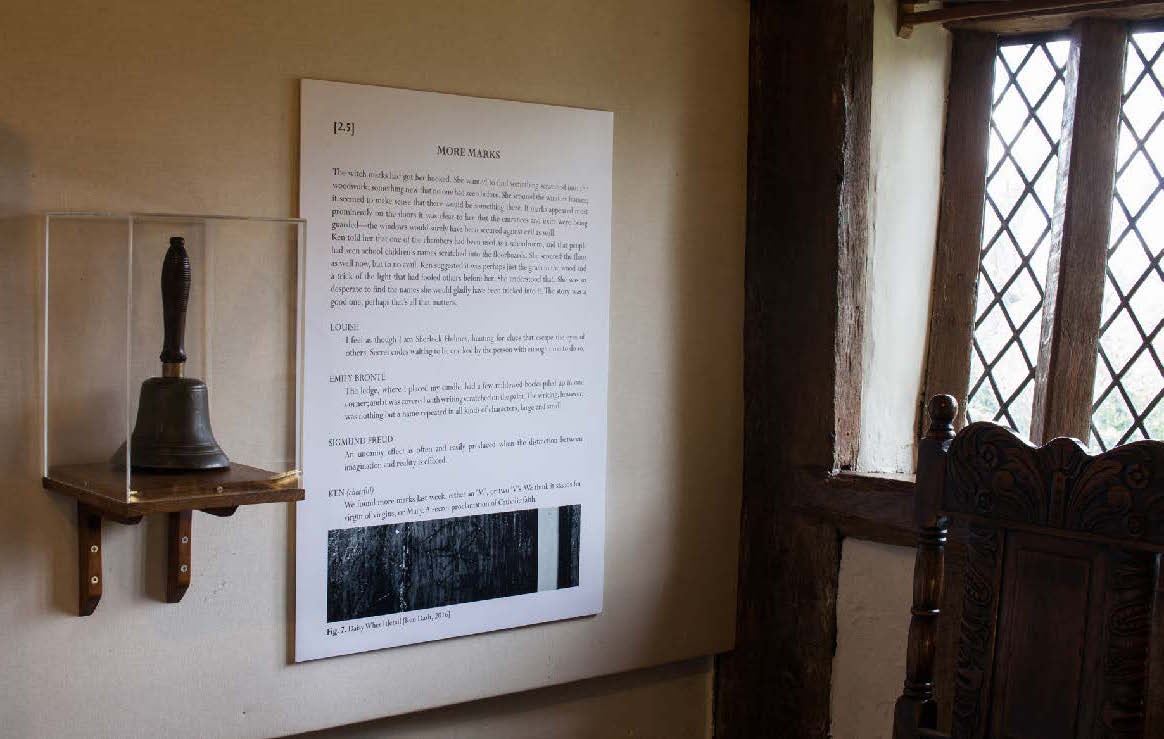
This project examines the ways that archival artefacts and documentation may be approached, exploring the value of creativity when thinking about the past, and the implications that varying processes can have on the way we understand source material. Acknowledging the connection between the book format and knowledge acquisition, the work, to date, has employed a book-led approach as a method of analysing ways of looking, alongside an exploration of what the virtues of re-contextualisation of historical infor-mation may be. The subjectivity of the viewer in working with archival material is not only acknowledged, but is considered a fundamental attribute.
The work addresses ephemeral documentation with a strong social or domestic aspect. Ephemera items are those initially intended to have a short lifespan; this generally applies to letters, forms, and other paperwork where longevity was not considered in their production. As material with which to work, these items are exciting, for they provide the opportunity to make something concrete from what was only ever intended to be transient. They also offer the opportunity to consider what was happening quietly in the background while the bigger, more recorded historical events take the forefront. The fragmentary nature of archival material is used positively, considering the gaps in information as a space where intuition and imagination can flourish.

Readings from the disciplines of archive studies, history, archaeology, and philosophy form the foundation of this project. In the practice that runs parallel with these readings, I reflect on a collection of archival material accumulated through an ongoing email conversation with an eBay seller. I assess how this body of ephemeral documents may be viewed in varying ways, drawing attention to the subjectivity of its new existence as a collection, asking if it might be considered an archive. A more institutional archive, by which I mean one necessarily affiliated with a museum, council, or corporate organisation, is examined alongside this, comparing the differences in approach to and experience of historical material collated in differing environments.
After spending much time trying to differentiate between the terms archive and collection, looking at both in terms of agenda, output, system, and institutional affiliation, I have made a conscious effort to think of the word archive as a verb, rather than a noun. In Time and Narrative, Paul Ricoeur writes ‘Archives are a set, an organised body of documents. Next comes the relationship to an institution’.1 Contrary to this, I suggest that these organised bodies of documents may also be referred to as a collection. What makes a collection of interest here is the process of archivisation, the cataloguing and considered intent to preserve and communicate for the future; not its affiliation with an institution. Once a collection has undergone this process of archivisation, then it may be called an archive. This also firmly roots archiving activity as something that needs to be tangibly undertaken, and I will consider the role the conditions of the archive play in this.
...
1 Paul Ricoeur, Time and Narrative, vol. III, trans. by Kathleen Blamey and David Pellauer, (Chicago, Ill: University of Chicago Press, 1988) [Temps de récits, Paris: Editions du Seuil, 1985], p. 116.